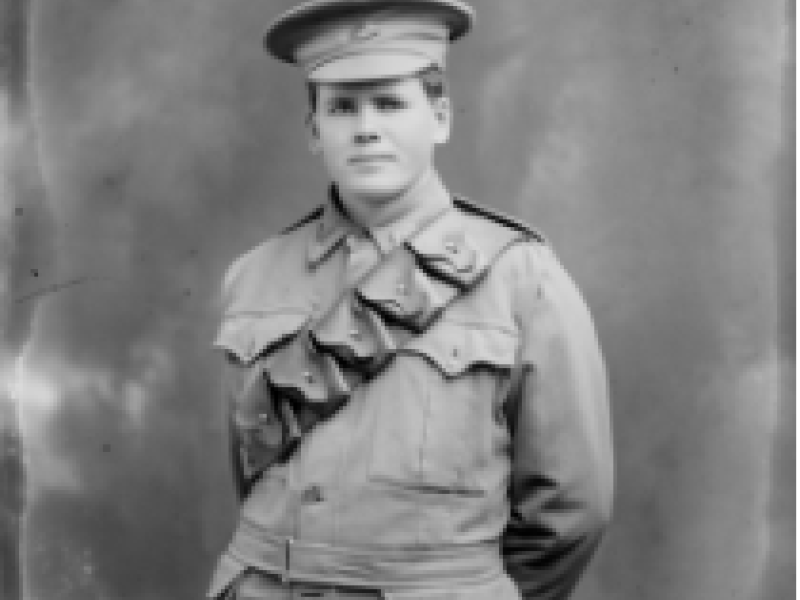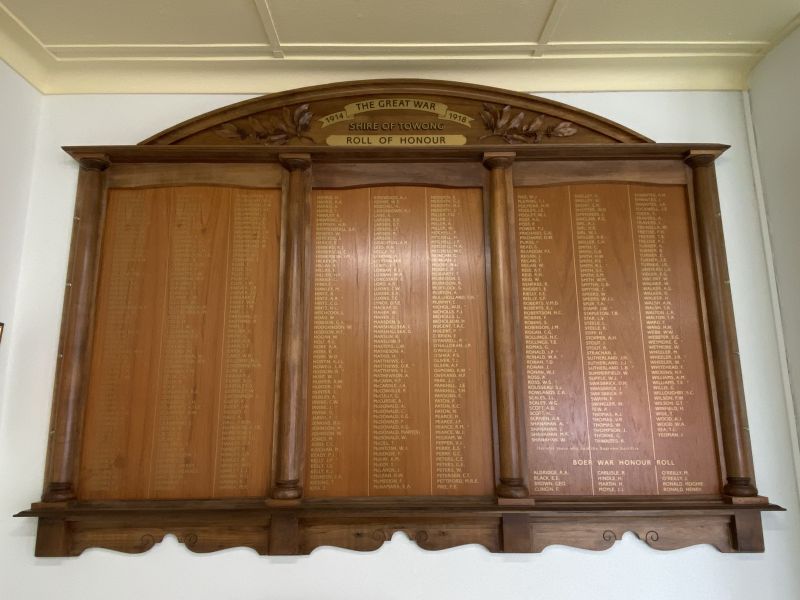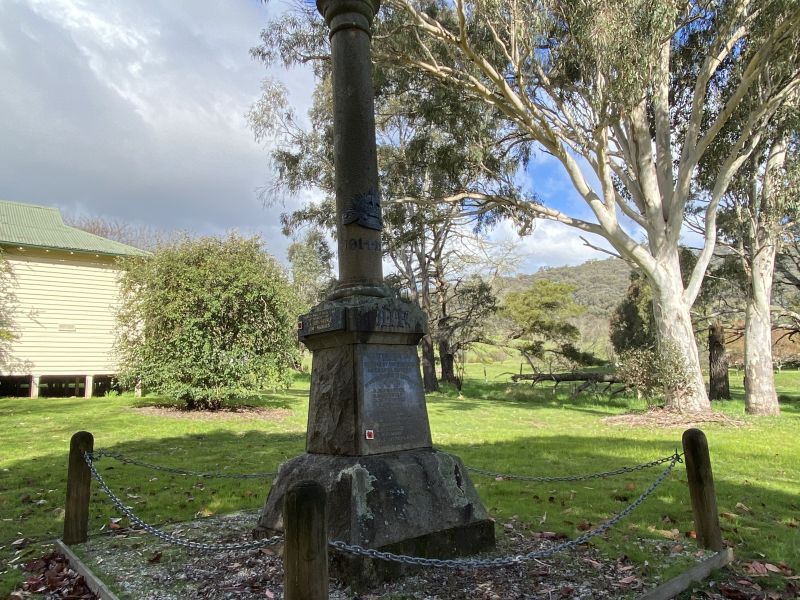Thomas Edwin (Pat) Williams
Pat was born at Granya, Victoria, on the 3rd of June, 1892. He would be one of fourteen children to Thomas and Ellen Mary (née Carlile) Williams. During his early years he attended Granya State School. Pat’s father passed away in 1913, as the result of a mining accident, at Bethanga. It left Ellen to raise a large family.
Pat enlisted in the midst of the Gallipoli Campaign in July of 1915. At that time the newspapers were full of heroic exploits undertaken by the Anzacs. It wouldn’t be long before they were full of casualty lists from the August offensive in places such as Lone Pine and the Nek. Like many of the boys from Granya who enlisted, Pat gave “miner” as his trade. His medical examination lists that Pat was missing the big toe on his right foot. Perhaps it was a result of a mining accident? He was given the Regimental Number 1297 and placed in the 6th Reinforcements of the 13th Light Horse Regiment.
The 6th Reinforcements embarked from Melbourne on board HMAT A38 Ulysses on the 27th of October, 1915, bound for the sands of Egypt. Also onboard were two Light Horsemen from nearby Berringama, Fred and Harry Nugent, both of whom would return to Australia at the end of the war.
Pat’s unit left Alexandria on the 17th of March, 1916, and disembarked at Marseilles in the south of France six days later. He was then taken on strength with the 1st ANZAC Mounted Regiment. By June of 1916, two Squadrons of the 14th Light Horse and all three Squadrons of the 13th Light Horse were in France. The Squadrons were brigaded into corps mounted regiments. The two from the 14th, along with a Squadron of the Otago Mounted Rifles, formed the 2nd Anzac Corps Mounted Regiment, while the 13th Light Horse became the mounted regiment for the 1st Anzac Corps and later the Australian Corps. Their duties involved traffic control, provision of orderlies and grooms to headquarters, escorting prisoners of war and providing work parties. Unlike their counterparts in Egypt, they wore steel helmets and carried gas masks for horses and men.
Two of Pat’s brothers also enlisted in the 1st AIF, Tom, who was five years older, and Harry, who was five years younger. In one of Harry’s letters home, dated the 21st of July 1916, he writes:
“I suppose you know that I struck brother Pat here, also Tom, better known as Doey Legge. We were only together for one evening, but had a good time while we were together. I think they have entered a calvary school.”
In late October of 1917, Pat was admitted to the 50th Australian Casualty Clearing Station suffering from scabies. He rejoined his unit after spending almost one month in hospital after which he was transferred to the 49th Battery, 13th Field Artillery Brigade of the 5th Divisional Artillery, and remustered as a gunner. Two months later, on the 18th of January, 1918, he was appointed as a driver in order for the 49th to have its complete establishment as drivers.
As the name suggests, the role of a driver in an artillery team was to drive the horses that were pulling the limber containing the shells and the artillery piece. The photograph above, although not one of Pat, shows how the team was distributed. An artillery gunner was the same rank as an infantry private.
On the 15th of February, 1919, Pat was admitted to the 40th Stationary Hospital at Havre, dangerously ill with bronchial pneumonia. Five days later he passed away.
Pat was buried in the Ste. Marie Cemetery (Division 64, Plot 8, Row M, Grave 3), Le Havre, France. He is also remembered on the Australian War Memorial Roll of Honour, the Granya War Memorial, and the Towong Shire Boer War and WW1 Roll of Honour at Tallangatta, Victoria. For his service, he was awarded the 1914-15 Star, the British War Medal and the Victory Medal.

 Stephen Learmonth
Stephen Learmonth
